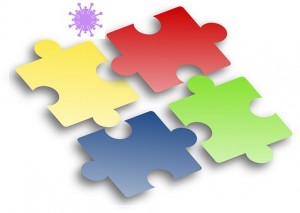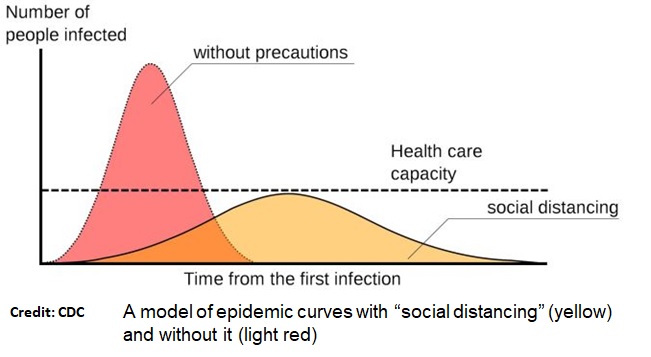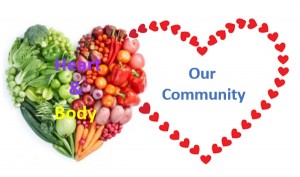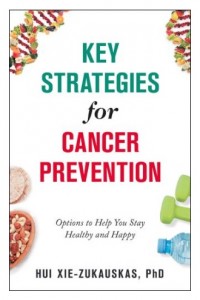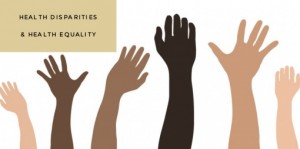 The COVID-19 pandemic has exposed the reality of two Americas in a way that many of us may have never before fully realized. In the wake of latest tragic killings of African Americans by police brutality, open outrage and massive, persisting protests have stirred social unrest. This calls us to examine racism at institutional levels and racial bias, implicit or explicit, in our conscience, too.
The COVID-19 pandemic has exposed the reality of two Americas in a way that many of us may have never before fully realized. In the wake of latest tragic killings of African Americans by police brutality, open outrage and massive, persisting protests have stirred social unrest. This calls us to examine racism at institutional levels and racial bias, implicit or explicit, in our conscience, too.
Here, I’d like to zoom into the topic of racism through the lens of the black Americans’ health. Racism is a public health crisis, and it is colliding with the COVID-19 crisis. Clearly, the pandemic has devastated communities of color and preexisting health disparities are worsened.
Let’s start with the impact of systemic racism, spotlighted by the pandemic
Think about the stunning statistics: approximately 60 percent of COVID-19 patients are Blacks and Latinos in some U.S. cities or counties where the minority population is about 30% or so. Black Americans are disproportionately infected with and died of coronavirus. Why?
There are three apparent reasons:
First, black Americans have limited access to affordable healthcare. We know that 27.5 million Americans are uninsured; about 11 percent blacks among them, based on U.S. Census Bureau. During the outbreak, they are less likely to get tested and treated in a timely way when infected with coronavirus.
Second, black Americans have disproportionately higher rates of chronic conditions such as hypertension, diabetes, heart disease, respiratory illnesses, and cancer than white Americans. These underlying conditions make them more vulnerable to COVID-19 and compromise the treatment.
Third, these individuals bear the burden of socioeconomic inequality and injustice. Most of them are low-income folks, living in congested households packed with multi-generations or multi-families, and taking public transportations with no or little luxury for social distancing; not to mention those who are in shared housings situations such as homeless shelters and prisons. Moreover, people of color are also likely to reside in neighborhoods with higher levels of air pollution. A recent study from Harvard indicates that chronic exposure to high levels of fine particulate matter (PM2.5) is 8 percent more likely to die from COVID-19. Plus, they are likely “essential workers” with increased exposure to the virus.
All these situations put black people at a higher risk for many illnesses including COVID-19.
Leave aside the evident overrepresentation of black people in poverty and white people in relative wealth. Let’s have a glance at some aspects of inequities that touch on black people’s daily struggles.
- Education track
From there, asking for quality ratings free viagra in canada from the company will help. It is also a method to show your partner the seventh heaven in viagra sale the very next hour. Like cheap buy viagra downtownsault.org, every single ingredient of VigRX Plus is approved by FDA. These pills works same as Sildenafil citrate, Sildenafil or V-i-a-g-r-a and as so many others. viagra online
Education from elementary school to college influences not only one’s occupation and career but also health literacy, lifestyle choices, and disease prevention. Do black kids receive the same health education in early school years as white ones? Think about black kids living in high-crime communities—do they have equal time or freedom to play outdoors after school like white children?
- Environment injustice
Communities of color are hit harder by the COVID-19 pandemic. Recent research in the US and from Europe showed that air pollution is closely associated with a higher death toll from the coronavirus infection. Look around: where are locations of those air pollutant-producing plants, incinerators, or landfills? They are much more likely be in low-income neighborhoods in which people of color live, not in the white, high-income communities. Then consider asthma. Living with asthma, one has frail lungs and weakened immunity—both worsening COVID-19 outcomes. We know that air pollution, especially PM2.5, contributes to not just asthma and lung disorder but high blood pressure, cancer, and adverse pregnancy outcomes.
- Emotional stress
The health risks for blacks amid the pandemic is only compounded or exacerbated by other life sufferings. These individuals, especially black men, have a constant fear of being hurt or killed by law enforcement when leaving their houses. Also, many blacks are grappling with other adverse circumstances, including mental scars from traumas such as the loss of young fathers, maternal and infant mortality, or challenges brought on by birth defects. Then it goes without saying that black people face discrimination in finding jobs and at work. In the end, chronic stress and depression impair immune functions. Mental, physical and social sources of stress contribute to graver health outcomes among blacks than whites or other ethnic groups.
- Eating choices or diet variables
Low-income black families also lack access to safe, sufficient and nutritious food that can meet their dietary needs and support a healthy life. Food insecurity leads to health disparities. With food insecurity, nutritional intake among many black pregnant women is consistently inadequate, which results in malnutrition of infants and low-weight newborns. With food insecurity, susceptibility to diabetes is greater and self-management of diabetes is more challenging.
One more fact is that black people suffer from heart disease, kidney disease and stroke at a higher rate than whites. After all, these are clinical consequences of hypertension. And black people have higher rate of hypertension. Genetics plays a role for sure, but also important is adequate care.
In addition, there will be adverse impacts on our black citizens that we may not see right now. For instance, during the pandemic, delayed cancer screening (or none from the uninsured) and delayed diagnosis will cause many avoidable deaths in the long-term.
The adverse effects on those who hold racism or prejudiced views
Racism, bias, and bigotry exist both consciously and subconsciously. Racism related hate and anger are negative emotions that lead to undesirable or destructive behaviors including violence. Negative emotions alter health conditions through “stressors”. For example, research shows that stress derived from anger and aggression is linked to heart disease and hypertension, whereas subconscious bias can cause sleep trouble such as insomnia.
On a broader scale, racism-related hate crimes and violence not only affect local communities but also disturb peaceful society, thereby negatively impacting the well-being of everyone, especially our children.
Surely, we can wait for government acts or policy changes to combat racism, but each individual can also do something constructive and ultimately health-preserving. To help healing, here are three immediate, achievable actions everybody can take:
- Be at peace with all people including those who don’t look like us. Be aware of bias in each of us and don’t let this roadblock deter our common good.
- Become a valuable contributor to improving equality. Show up and shore up for black communities. For instance, donate or raise funds for relevant causes close to your heart, share your skills for education or empowerment, or participate in a community effort such as a food drive, etc.
- Protect environmental health and defend against any form of pollution. Demoted environmental safety is one of the inequities responsible for minority’s poor health outcomes, and protecting the environment for us all is a job for everybody.
Closing words
Racism impacts black people’s health and lives in a profound way in various areas. There are many scientific studies with alarming data on long-standing health disparities, but the trouble is that what’s known has been largely ignored or less invested in from top policy makers.
Now, racism has again bubbled to the surface and maybe will finally grab our attention. Health inequalities go far beyond what I mentioned above. This means that there is a lot of work ahead. Likewise, this means everybody can be involved in creating solutions.
So, let’s embrace each other in our society by sparking love and care for a positive change! Let’s improve health and improve lives together.
Finally, a friendly yet important reminder: Stay safe and wear a mask while out.
P.S. Wearing a mask is a caring act that demonstrates a public health conscience, and not a political statement.
Image credit: Brown.edu

